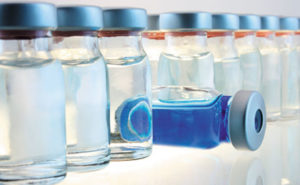 Cleanroon Technology published an article in 2011 titled Avoiding Glass Delamination. Delamination is where a material fractures into layers; it is a mode of failure and is unsafe in many scenarios. Delamination of a glass container carrying parenteral drugs has resulted in many drug recalls. This leads to particles in the drug itself; such as a shard of glass. As well as the internal finishing in the container. Going against the USP<790> specifications and expectations of particles in parenteral drugs.
Cleanroon Technology published an article in 2011 titled Avoiding Glass Delamination. Delamination is where a material fractures into layers; it is a mode of failure and is unsafe in many scenarios. Delamination of a glass container carrying parenteral drugs has resulted in many drug recalls. This leads to particles in the drug itself; such as a shard of glass. As well as the internal finishing in the container. Going against the USP<790> specifications and expectations of particles in parenteral drugs.
Glass has always been considered for traditional material use—due to the affordability of the material. Although, with potential breaking and delamination, it could possibly cost a pharmaceutical company a lot more than they had planned. It is suggested that an alternate—possibly more expensive material, could save pharmaceutical companies in the future.
Many recalls due to glass packaging include:
- Visible Particles consistent with glass
- Cracks in pre-filled syringes resulting in bacterial growth in the drug
- Glass particles
- Cracked or broken containers
There are different formulas of glass that are created for packaging. Conditions are varied for each glass formula; the quality and durability is not promised to be the same. Manufacturers are responsible for ensuring that the quality of the container they choose will work with the product being stored in it. Other packing materials have been a suggested solution to limit recalls. For instance, polymer fulfills the same desired properties as glass and could be potentially safer for parenteral drugs.

